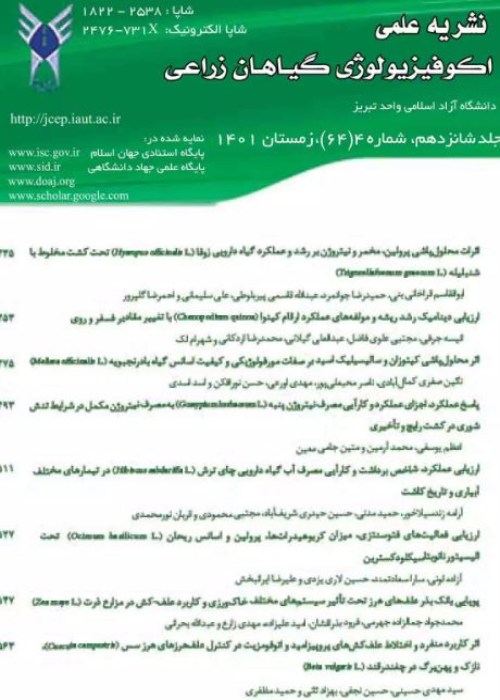Beta-Estradiol Hormone Application to Increase Salt Tolerance of Different Potato Genotypes (Solanum tuberosum L.)
This experiment was performed to investigate the effect of beta estradiol hormone application on increasing salinity stress tolerance of different potato genotypes in a factorial split plot experiment based on a randomized complete block design with three replications in Mohaghegh Ardabili University in 2020. Salinity stresses with three levels (0, 50 and 100 mM sodium chloride) and beta-estradiol also with three levels (0, 10-12 and 6-10 M) were assigned to main plots, and 10 potato genotypes to subplots. The results revealed that plant height, number and weight of minituber per plant, average tuber weight and content of antioxidant enzymes in the studied genotypes showed a positive response to beta-estradiol. Thus, with increasing the amount of beta-estradiol application from 10-12 to 10-6 M, the number and weight of minitubers increased in most of the studied genotypes, but the amount of this increase was varied between genotypes. G5 and G6 genotypes with an average of 7.85 and 7.83 minitubers had the highest number of tubers per plant at 10-6 M beta-estradiol, respectively. The lowest value of this trait belonged to G10 genotype with an average of 3.66 minitubers, without significant differences with those of G8 and G9 genotypes. With increasing salinity level, the enzymes of superoxide dismutase, catalase and polyphenol oxidase and also soluble sugars were increased. In all of three salinity levels, beta-estradiol application significantly increased the levels of these enzymes. The highest levels of these enzymes were observed at salinity level of 100 mM with the use of 10-12 or 6-10 M beta estradiol. In this study, the use of beta-estradiol, depending on the genotype, was able to moderate the effect of salinity on the quantitative and qualitative characteristics of potatoe tubers. Overall, in this study, G5 and G6 genotypes had relatively high minituber number and weight per plant under salinity stress conditions, Thus, selection of these genotypes is recommended for future breeding programs. Also, these two genotypes had the highest number and weight of minitubers per plant at 10-12 and 10-6 M beta estradiol, which indicates that these genotypes have a high genetic potential for consumption of this hormone as compared to other genotypes.
- حق عضویت دریافتی صرف حمایت از نشریات عضو و نگهداری، تکمیل و توسعه مگیران میشود.
- پرداخت حق اشتراک و دانلود مقالات اجازه بازنشر آن در سایر رسانههای چاپی و دیجیتال را به کاربر نمیدهد.


